Choosing the right operating system (OS) can greatly affect your computing experience. It impacts your productivity and overall satisfaction. As a professional copywriting journalist, I’ve looked into the main features and differences between Linux and Windows. This is to help you decide which one is best for you.
Windows, made by Microsoft, has been the top OS for a long time. It works well with many hardware and software options. Linux, an open-source alternative, is known for its security, flexibility, and customization. Windows 11 was released in October 2021, while Ubuntu 24.04 LTS came out in April 2022.
When making your choice, think about software compatibility, ease of use, privacy, and performance. Windows 11 and macOS Sequoia both have a 4.5 rating. But Ubuntu Linux and ChromeOS also get high marks, with ratings of 4.0.
Key Takeaways
- Windows and macOS support the widest range of hardware and software, while Linux-based Ubuntu is free and open-source.
- Linux is generally more secure than Windows due to factors like user permissions, open-source code, and package management.
- The choice between Linux and Windows depends on your specific needs, such as software compatibility, gaming, ease of use, and privacy concerns.
- Linux systems are highly customizable, and the operating system is known for powering many servers due to its stability and security features.
- The cost of a Microsoft license for standard versions ranges from around $70 to $200, with the ability to install on a specific number of computers.
What Is an Operating System?
Every computer has a key software called the operating system (OS). It connects the user to the computer’s hardware. It manages resources for smooth operation. The OS controls tasks and devices, making the computer work well.
Understanding the Role of an Operating System
The main jobs of an operating system include:
- Providing a graphical user interface (GUI) for using the computer with a mouse, trackpad, and keyboard
- Managing the computer’s memory, storage, and power
- Helping hardware and software talk to each other
- Fixing problems with hardware and software
- Making sure each app and process gets what it needs
Graphical User Interface (GUI) in Operating Systems
Modern operating systems have a key feature: the graphical user interface (GUI). The GUI shows the computer’s files, apps, and parts in a visual way. This makes it easy to use the computer. It’s different from old text-based interfaces.
The GUI is now common in desktop and mobile systems. It’s found in Windows, macOS, and Linux. It makes using computers easier and more friendly than text interfaces.
What Is Windows?
Windows is a well-known graphical operating system for personal computers. It was first introduced by Microsoft in 1985. Today, it holds a 73% market share, making it the top choice for many users globally.
Its success comes from its easy-to-use interface and wide support for software and games. This has made Windows a favorite for many.
Microsoft has released many Windows versions over the years. Windows 7, 8, and 10 are the most used today. Despite new features, Windows’ core architecture has stayed the same. This provides a consistent and smooth experience for users.
Windows Market Share and Popularity
The Windows operating system leads the personal computer market with a 74.96% share as of April 2021. Its popularity stems from its user-friendly interface, vast software library, and wide hardware compatibility. This makes it a top pick for both casual users and professionals.
Windows is widely used across different industries and sectors. It’s the standard for desktop computing, offering a reliable platform for various applications and tasks. This makes it a go-to choice for both small businesses and large enterprises.
What Is Linux?
Linux is a family of free, open-source operating systems. It was developed by a global community of programmers and enthusiasts. Unlike Microsoft Windows, Linux’s source code is open for anyone to view, modify, and distribute.
Linux as an Open-Source Operating System
The open-source nature of Linux offers customization and flexibility. Users can customize the operating system to their needs. They can choose from many Linux distributions, each with its own applications, desktop environments, and system configurations.
Different Linux Distributions
- Ubuntu: Known for its simplicity and extensive community support, it’s one of the most popular.
- Fedora: A community-driven distribution sponsored by Red Hat, it focuses on innovation and cutting-edge software.
- Linux Mint: It aims to provide a traditional desktop experience with a strong focus on user-friendliness.
- Arch Linux: A highly customizable distribution that requires a hands-on approach, popular among advanced users and developers.
- Debian: A stable and reliable distribution that serves as the foundation for many other Linux distros, including Ubuntu.
These are just a few examples of the many Linux distributions available. Each caters to different user needs and preferences. Linux’s open-source nature leads to constant innovation and evolution. It’s a versatile and powerful operating system for various applications, from personal desktop use to enterprise-level server deployments.
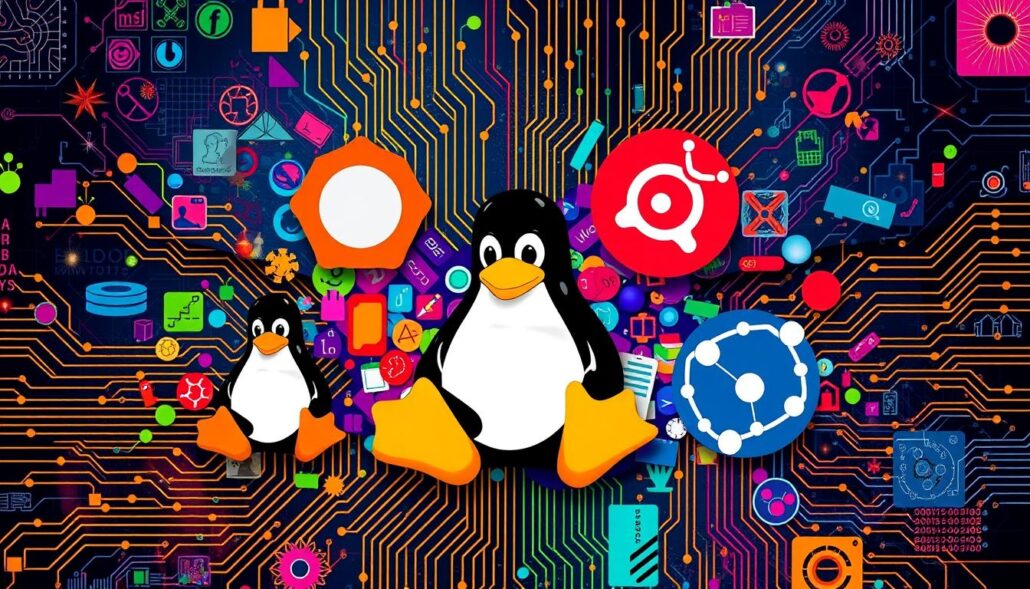
Why Is Linux More Secure Than Windows?
Linux stands out when it comes to operating system security. Its open-source nature, strong user permission system, and community-driven development make it a safer choice. This is why many users and organizations prefer Linux over Windows.
Linux’s user permission structure is a key reason for its security. Users need a root password to install software or make system-wide changes. This is different from Windows, where admin accounts have full access by default. This extra step helps prevent unauthorized changes and reduces the risk of malware or unauthorized access.
The open-source nature of Linux also plays a big role. A large community of developers can review the code, find vulnerabilities, and fix them quickly. This teamwork ensures security issues are addressed fast, limiting the time attackers have to exploit them. Windows, being proprietary, relies more on Microsoft to fix security issues, which can sometimes be slower.
Linux’s smaller user base is another security advantage. Cybercriminals often target the most popular operating systems because they have more potential victims. Since Linux has a smaller market share on desktops, it’s less appealing to malware and cyber threats.
| Feature | Linux | Windows |
|---|---|---|
| User Permissions | Requires root password for system-level changes | Administrator accounts have full access by default |
| Security Patching | Collaborative open-source community, quick response to vulnerabilities | Relies on vendor (Microsoft) for security updates, potential delays |
| Malware Targeting | Lower desktop market share, less attractive target for attackers | Larger user base, more appealing target for malware |
While Windows has improved its security, Linux’s design and community-driven approach make it more secure. This is especially true for critical applications, servers, and environments where data and system stability are crucial.
Linux vs. Windows: Which OS is Best for You?
Choosing between Linux and Windows depends on what you need and like. Each OS has its own strengths and weaknesses. This makes them good for different users and situations.
User Permissions and Access Rights
Linux and Windows handle user permissions differently. Linux needs admin access for big changes, which is safer than Windows’ full-access model. This might make Linux harder to learn, but it’s safer for some tasks.
Open-Source Code and Community Contributions
Linux is open-source, which is a big plus. The Linux kernel has over 23.3 million lines of code. It’s always getting better thanks to many developers. This openness means you can customize and get lots of support from the community.
Windows, on the other hand, is made by Microsoft and not open-source. This means the code is private, and changes are controlled by the company. Even so, Windows is still the most used OS, with 92.63% of PCs running it. But Linux is gaining fans, especially in certain fields and among developers.
In the end, your choice between Linux and Windows depends on what you need. If you like open-source, customization, and community help, Linux might be for you. But if you want easy use, compatibility with common software, and professional support, Windows could be better.
Software Installation and Package Management
Windows and Linux have different ways to install software. Windows users often search online for files, which can be slow and risky. Linux, on the other hand, uses package managers for a smoother process.
Linux Package Managers and Repositories
Linux comes with strong package management systems. These systems offer a wide range of software, libraries, and tools. You can find apt-get in Ubuntu and yum in Fedora.
These managers update systems and apps easily with one command. This is better than Windows, where updates are done one program at a time.
Windows Software Installation Process
Windows users must find and download software files themselves. This can be slow and risky. Unlike Linux, Windows lacks a comprehensive package manager.
| Metric | Linux | Windows |
|---|---|---|
| Software Installation Time | 15 seconds for Abiword on Debian | 35 seconds for Abiword on Windows |
| Software Installation Complexity | Straightforward with package managers | Requires searching for and downloading installation files |
| Security of Software Sources | Secure, community-managed repositories | Potentially less secure, depending on the source |
| Software Update Automation | Centralized updates through package managers | Individual program updates required |
In summary, Linux and Windows handle software installation differently. Linux offers a secure and efficient way to install software. Windows, however, requires a more decentralized and potentially riskier approach.
Update and Reboot Processes
The way operating systems update and reboot can differ a lot between Linux and Windows. Linux often beats Windows in making updates efficient and secure.
Linux systems like Ubuntu and Fedora need lots of updates for security and bug fixes. For example, Ubuntu 9.04 got 24 security updates in just 51 days. Fedora 9 needed even more updates, taking about two hours to finish. This shows how much work goes into keeping Linux systems up-to-date.
On the other hand, Windows updates are bigger and often need a reboot. Windows Vista got 46 updates in 100 days, improving performance and security. But, needing to reboot can make users delay these updates.
Linux makes rebooting easier. You can use the “reboot” command to restart a Linux system. Windows also has a shutdown command for rebooting, and you can use the GUI to restart too.
In summary, Linux updates and Windows updates have different approaches. Linux updates are quicker and don’t always need a reboot. This makes Linux more secure than Windows, as users are more likely to keep their systems updated.
“Linux updates can be performed quickly without the need for a system reboot, whereas Windows often requires users to restart their computers after updates, making them more likely to postpone or neglect important security patches.”
User-Friendliness and Ease of Use
Both Linux and Windows have improved a lot in making things easy for users. Linux, especially with Ubuntu, has become much easier to use. But, Windows is still more popular because more people know it.
Linux is free because it’s open-source. It’s great for saving money. Distributions like AlmaLinux, Ubuntu, CentOS, and Debian are perfect for servers and web hosting. They’re stable and secure, needing less upkeep than Windows.
Windows is known for being easy to use and working well with big business software. It’s a favorite among both new and seasoned users. Its design is simple and well-known.
Ubuntu and Mint are top picks for easy-to-use Linux. They’re as simple as Windows. Zorin OS and Elementary OS are also good for those who use the internet a lot or have touchscreen devices.
| Linux User-Friendliness | Windows User-Friendliness |
|---|---|
|
|
In conclusion, Linux has gotten a lot better, but Windows is still more popular. The choice between Linux and Windows depends on what you need, how much you want to spend, and how tech-savvy you are.
Privacy and Data Collection
Choosing between Linux and Windows affects your privacy a lot. Linux is open-source and keeps your data safe. It collects less information by default, giving you more control over your online presence.
Windows, on the other hand, collects a lot of data. It tracks your activities, system details, and even where you are. This data goes to Microsoft, which can worry some people about privacy and misuse.
Even though some Linux versions collect data too, it’s easier to stop them. Linux is open and easy to understand, making it simple to manage your privacy. This is different from Windows, which has complex settings.
| Linux Privacy | Windows Privacy |
|---|---|
|
|
So, the choice between Linux and Windows depends on what you value more. If you want a familiar interface, Windows might be better. But if you care about keeping your data private, Linux is a safer choice.
Performance and Speed Comparison
The debate on Linux vs. Windows performance has been ongoing. Both platforms have their strengths, but their performance can differ a lot.
Linux Performance
Linux is known for its fast performance and efficiency. Its kernel is lightweight and optimized for resources. This makes Linux systems boot up and run tasks faster than Windows, which uses more resources.
Linux shines on older or less powerful hardware. Its efficient use of resources and simple design let it run well on many devices. This includes everything from low-powered computers to high-end servers.
Windows Performance
Windows is often seen as more resource-hungry. Microsoft has worked hard to improve Windows’ performance. But Windows still needs more system resources than Linux, especially with its extra features and background services.
Yet, modern Windows versions like Windows 10 and 11 are getting better. They can now match or even beat Linux in some areas. This is especially true for gaming and multimedia, where Windows is often preferred.
In short, Linux usually has better performance and speed. But the gap between Linux and Windows has narrowed. The choice between them depends on what you need and how you plan to use the operating system.
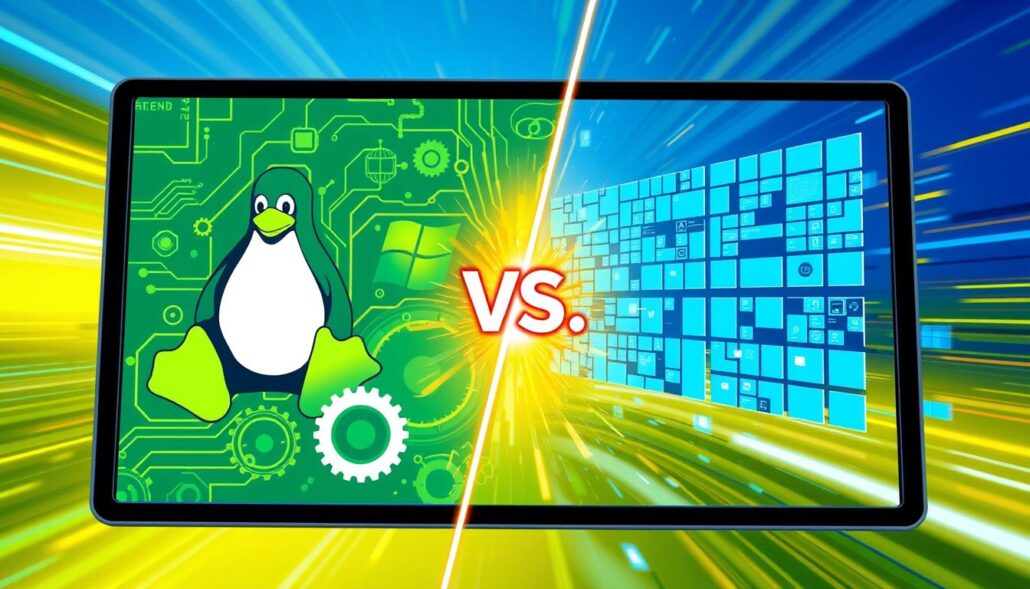
“Linux is a highly efficient operating system that delivers exceptional performance, especially on lower-end hardware. Its lean design and resource-optimization make it a popular choice for those seeking a fast and responsive system.”
Whether you’re a personal user, a developer, or running a business, knowing about Linux and Windows performance is key. It helps you choose the best operating system for your needs.
Conclusion
The choice between Linux and Windows depends on what you need and like. Windows is great for games and easy to use. Linux is better for security and works well on older computers.
Windows is best for everyday users and gamers because of its wide software and game selection. But, Linux is perfect for tech lovers and those who want more security and control. Creatives might prefer MacOS for their needs.
Choosing an operating system should consider how you’ll use your computer, the hardware, and what you like. Knowing the good and bad of each system helps make a choice that fits your needs and preferences.

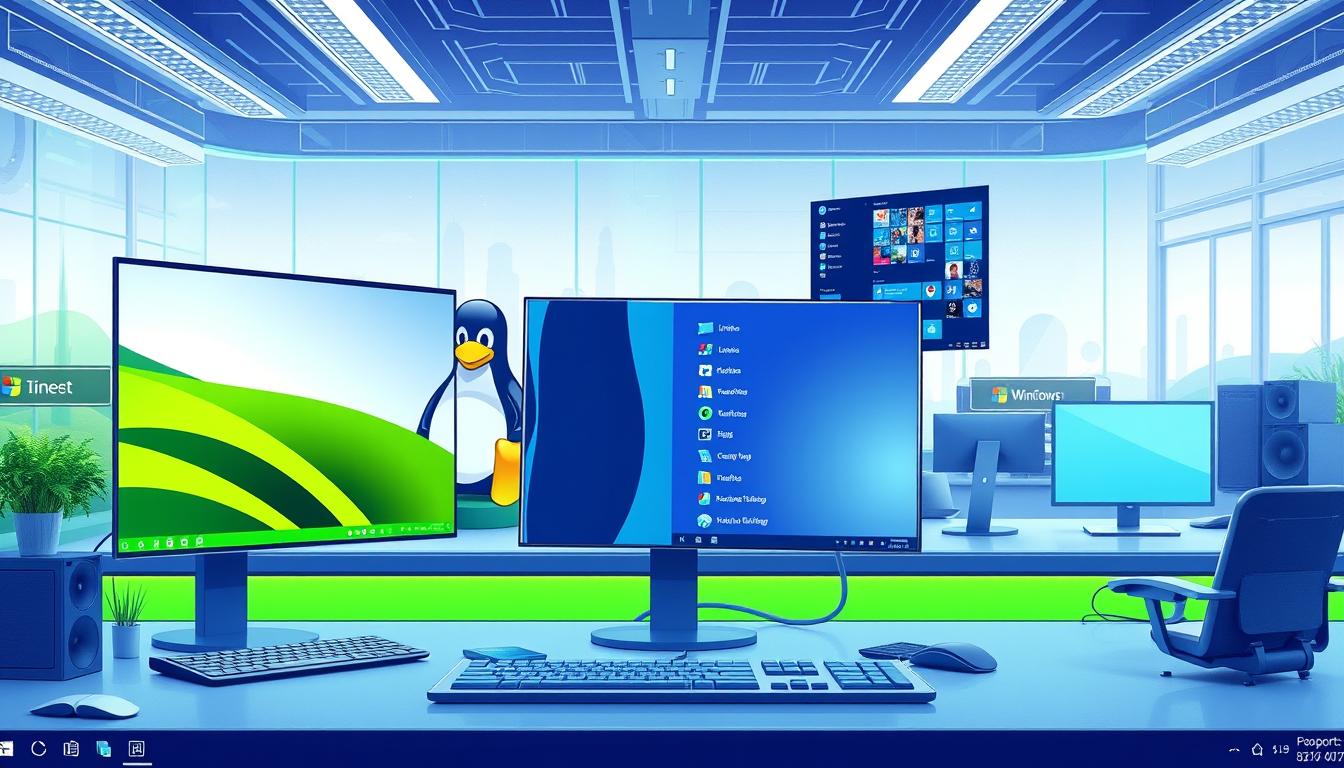

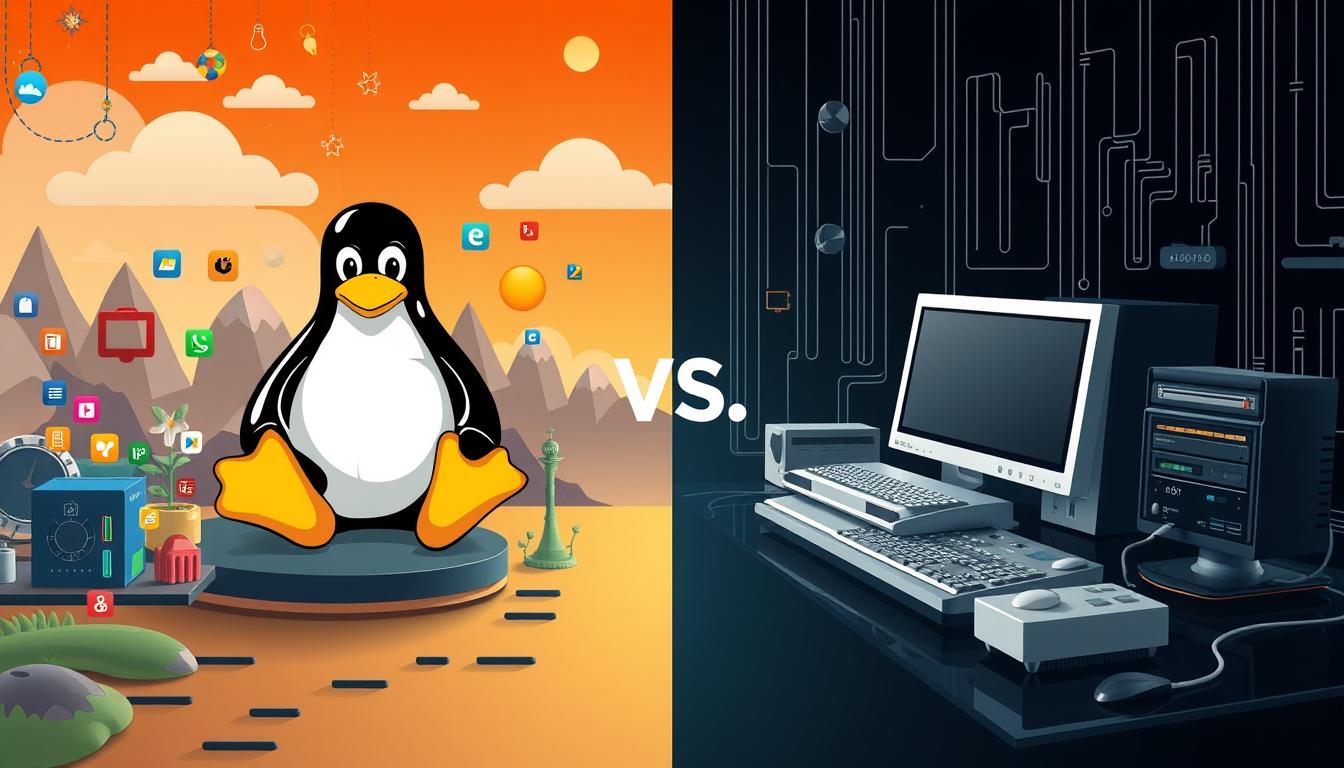


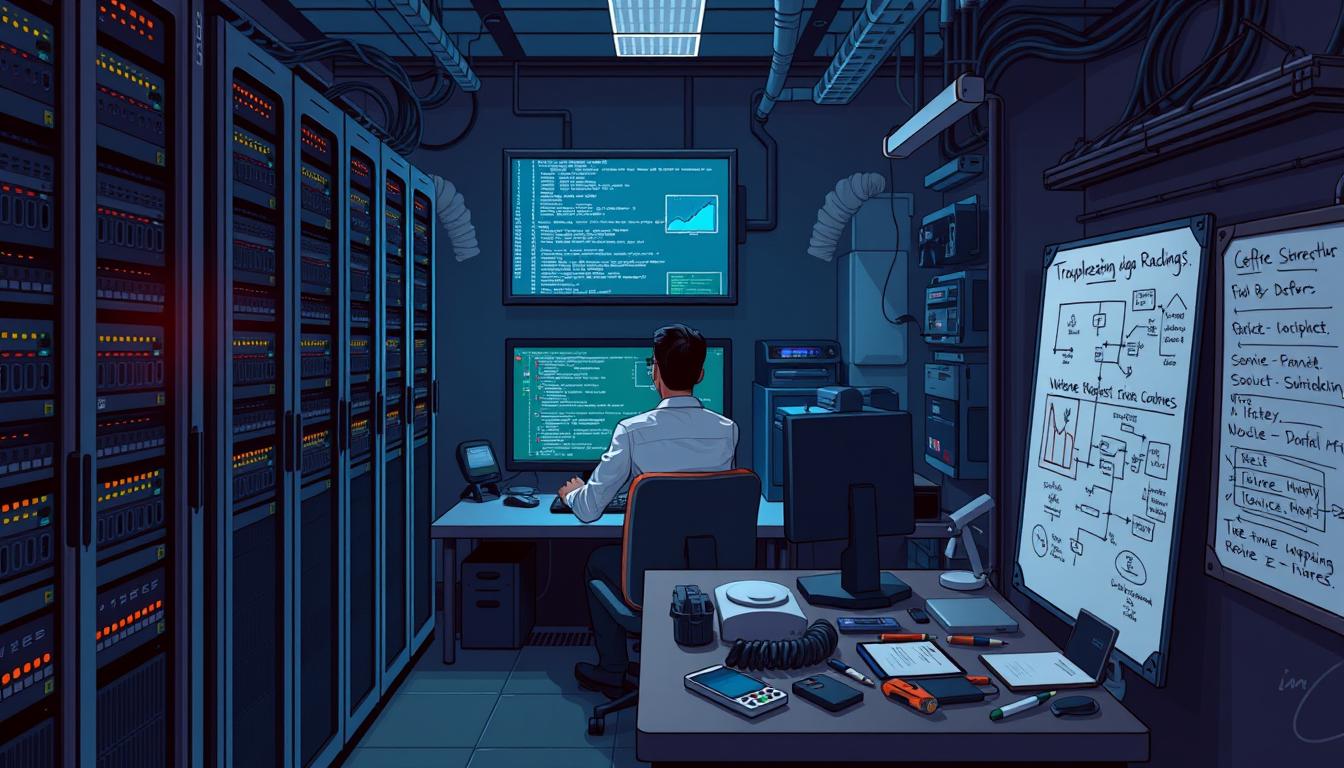
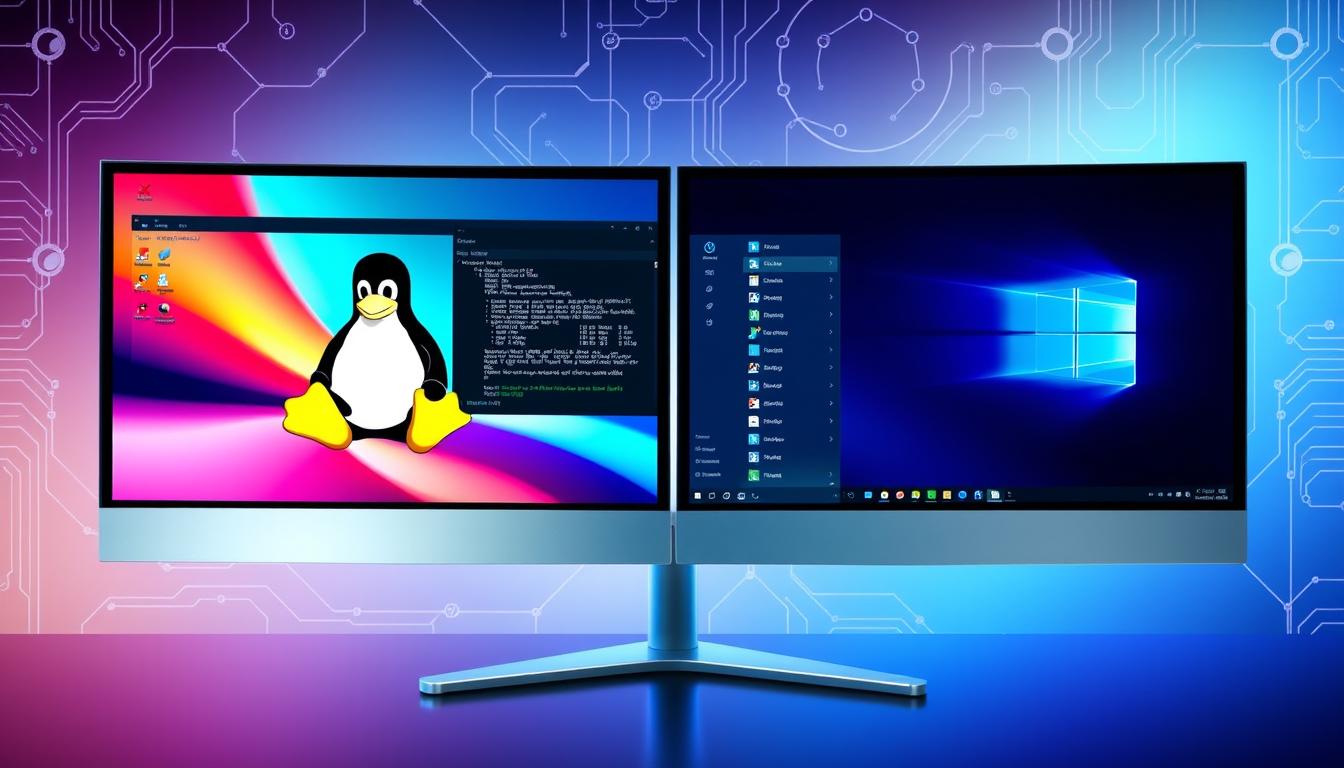
Leave a Reply